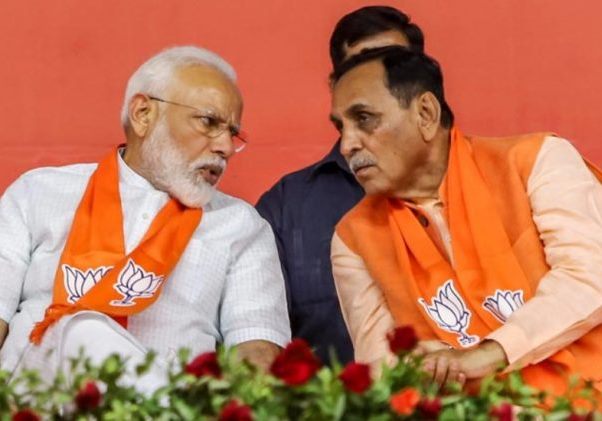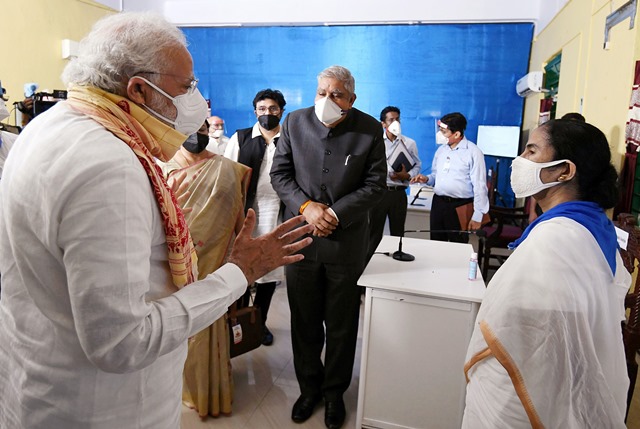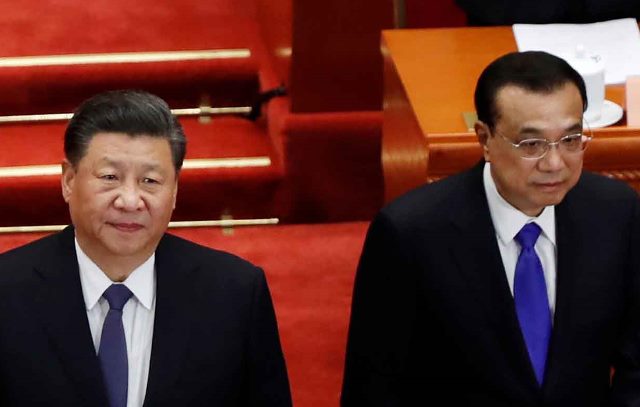How myths collapse when faced with reality! When Narendra Modi swept to power in 2014, his meteoric rise from chief minister to the national political stage was attributed essentially to the success of his Gujarat model of development which was touted to have transformed his home state into a living paradise. But six years later as India battles the Covid-19 pandemic, the Gujarat model of development is unravelling.
The fancy infrastructure in the state’s main urban centres, the uninterrupted power supply, the extensive road network and the flow of private investment have proved to be of little help in handling the rising number of novel coronavirus cases.
For the record, Gujarat is among the top three states along with Maharashtra and Tamil Nadu which have the highest number of corona infections and deaths in the country. Till May 23, Gujarat had recorded a total of 13,300 coronavirus cases with a seven-day growth rate of 7.66 per cent and over 800 fatalities, second only to Maharashtra which tops the list.
ALSO READ: What Rest Of India May Learn From Kerala
Unable to handle the corona crisis, Gujarat chief minister Vijay Rupani has consistently blamed the spread on the large number of Gujarati Muslims who travelled to Delhi in early March to attend a religious meeting of the Tablighi Jamaat, “a missionary movement”.
While this finger-pointing helps push the Bharatiya Janata Party’s communal agenda, the truth is that Gujarat is currently paying the price for its poor public health system. It is an acknowledged fact that successive state governments did not invest adequately in public health facilities. With the state showing little interest in this vital sector, it has been open season for private players whose medical services are more expensive and, therefore, beyond the reach of the poor.
If Rupani is struggling today to manage the COVID-19 pandemic, Modi has to share the blame as he did little to ramp up the rickety health care infrastructure in the state during the 13 years he was chief minister.
ALSO READ: Statism In The Time Of Pandemic
The budgetary allocation for the health sector in Gujarat can only be described as meagre. The state’s outlay for health and family welfare sector was Rs.923 crore for 2020-21, down from Rs.10,000 crore spent in 2018-19. These official figures tell their own story. Even states like Rajasthan and Bihar, which are not exactly known for their high-quality health infrastructure, have higher budgetary allocations for the public health care facilities.
In that case, what exactly is the famous Gujarat model of development all about? This model is essentially focused on building infrastructure – from roads and highways to tall impressive buildings, and attracting foreign and domestic investments. During the years when Modi was chief minister, Vibrant Gujarat summits, were organised every alternate year to attract private investment to the state. This high-profile event was chalked up as Modi’s personal achievement as it brought in private investment to the state. This open invitation to industrialists to set up shop in Gujarat also won him the support of the corporate sector which literally went out on a limb to support Modi’s candidature as the BJP’s Prime Ministerial face in 2014.
But in the process of building infrastructure, encouraging industrial growth and promising ease of doing business, Modi failed to pay sufficient attention to human development which clearly did not figure as a priority area for him. The result was that while Gujarat made impressive gains on the economic front and registered high growth rates, its social indicators lagged far behind.
ALSO READ: How Covid-19 Will Change Our Lives
The economic strides made by Gujarat were flouted as a success story, worthy of replication across the country. However, this was only half the story. It failed to tell you that the economic gains had not percolated down to benefit the larger mass of people and had instead been cornered by a small affluent minority. The vast majority continued to live in poor conditions with little access to quality health care or hygiene standards. Whether it is the health of children or the mortality rates of adults, Gujarat does not boast of a good record.
Then again the Gujarat model has not been kind to the large army of migrant workers who have travelled from as far as Uttar Pradesh, Bihar Odisha and Rajasthan to work in the state’s industrial units or in the unorganised sectors. Since most of the migrants are poor and semi-literate and, unable to speak up for their rights.
If it was not for the corona crisis, the plight of these migrant workers would have gone unnoticed. They have been living and working in pathetic conditions with the host state failing to acknowledge their contribution to Gujarat’s economy. Denied their wages during the lockdown and no proper food and shelter, angry migrant workers in Surat and Vadodara have staged angry protests, which have even turned violent on occasion, to demand food and a passage back home to their native village.
And if it was not for the COVID-19 pandemic, the myth about the Gujarat model of development would not have been busted. It took a miniscule virus to expose the underbelly of Gujrat model.










